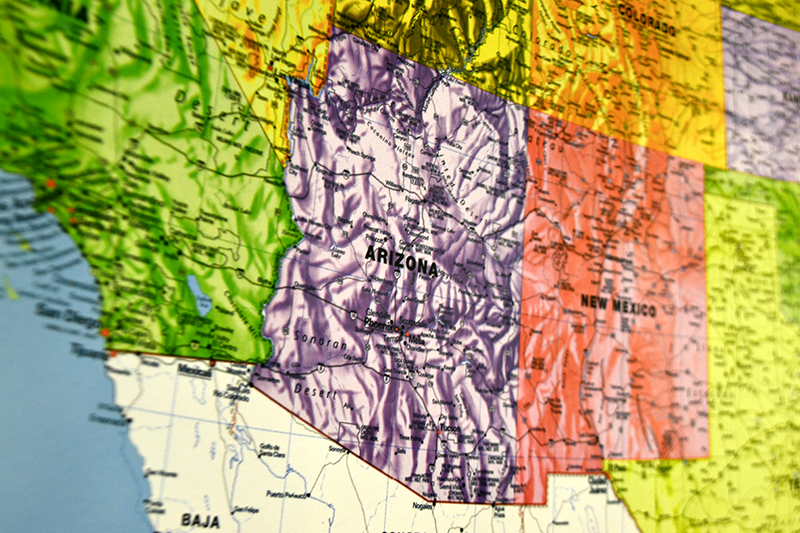
The Migrant Protection Protocols (MPP, better known as "Remain in Mexico") are now being expanded to migrants apprehended in Nogales, Ariz. That move increases the MPP net, closing a hole I identified in a November post, in which I stated: "On November 11, 2019, the Wall Street Journal reported that [MPP] are not in effect in Arizona. If true, this is a significant vulnerability to border enforcement that the administration must address immediately."
As I explained:
The reasons for the inconsistency in the application of MPP appear to be logistical: The nearest immigration court near the border is in Tucson, more than an hour away from the Nogales port of entry, and Yuma (again, a major crossing point) is three hours from either the immigration court in Tucson or the immigration court in Phoenix. "Nogales ... is in a cramped area with little room to build holding facilities."
I argued: "The Executive Office for Immigration Review (EOIR), the Department of Justice (DOJ) agency with jurisdiction over the immigration courts, could resolve this issue rather quickly by establishing immigration courts in Nogales and in Yuma."
That is not the tack that the government has decided to take, however, according to the Associated Press report, because while the migrants in question (30 as of the time of reporting) had been returned across the border to Nogales, Mexico, their cases had actually been "scheduled roughly 350 miles (563 kilometers) away in Juarez, Mexico."
(Not to second-guess the AP, but I doubt that the U.S. government is scheduling cases in Juarez, Mexico's sixth largest city. Rather, those respondents have likely been scheduled for court hearings in El Paso, Texas, which is across the border from Juarez, and where EOIR operates two courts. I am not aware of any immigration courts that are not within the geographical boundaries of the United States, and EOIR does not list any on its website.)
If the government had not plugged this hole in the MPP net, migrants seeking entry into the United States pending proceedings would have flooded into Arizona, safe in the knowledge that they would have been admitted and (likely) released. The Wall Street Journal article referenced above quoted "[a]uthorities and advocates" who confirmed that "hundreds" of family units were "being released to shelters, from which they will likely travel to other states and wait for their cases to be resolved, a process that can take years," instead of being returned to Mexico to await their immigration-court hearings.
If the Journal and advocates were aware of this situation, there is no way that smugglers and the migrants themselves were unaware of it. And, as I stated in my November post: "The border, like nature, abhors a vacuum, and I would expect smugglers to begin rerouting aliens to Arizona, unless CBP and EOIR respond quickly."
The AP report asserts that this new policy would require "asylum-seekers [to] have to find their own way through dangerous Mexican border roads." This ignores two points, one of which the AP itself makes.
First, most of these migrants are not eligible for asylum, as the article makes clear:
More than 56,000 people were sent back to Mexico by the end of November, according to Syracuse University's Transactional Records Access Clearinghouse. Of the more than 24,000 cases that have been decided, only 117, or less than 1%, have been granted asylum or some other form relief allowing them to stay in the United States.
The asylum laws apply equally to all respondents in removal proceedings (with unacceptable circuit-court differences, but that is a separate problem), regardless of whether those migrants are returned to Mexico under MPP or allowed to enter the United States and go through removal proceedings in this country. So, fewer than 1 percent of the aliens who are subject to MPP (and who have had their cases heard) are actually eligible for asylum. I will note that many, if not most, of those aliens likely failed to appear and were simply ordered removed in absentia (with their asylum cases abandoned), but that fact simply underlines the weaknesses in their claims.
Second, those migrants had to travel through some 2,000 miles of Mexico just to get to Arizona, so an additional 350 miles should not make that big a difference.
The likely outcome of closing this geographic loophole is that foreign nationals will skip the additional travel to the middle of the Sonoran desert and simply attempt entry along the border in the Rio Grande Valley of Texas, which is much closer to the Mexico-Guatemala border that they must have crossed to be subject to MPP (which does not apply to Mexican nationals).
